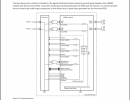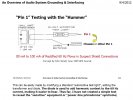OP
- Thread Starter
- #21
Thank you all for the replies.
Everything seems clear to me now.
I only have one doubt left. In this case, with Hypex module, is it better to have the source (DAC) with floating or grounded power supply? (whatever it makes difference)
The fact of creating a loop should it always be prevented or if properly managed is it fine anyway?
Everything seems clear to me now.
I only have one doubt left. In this case, with Hypex module, is it better to have the source (DAC) with floating or grounded power supply? (whatever it makes difference)
The fact of creating a loop should it always be prevented or if properly managed is it fine anyway?
Last edited:

